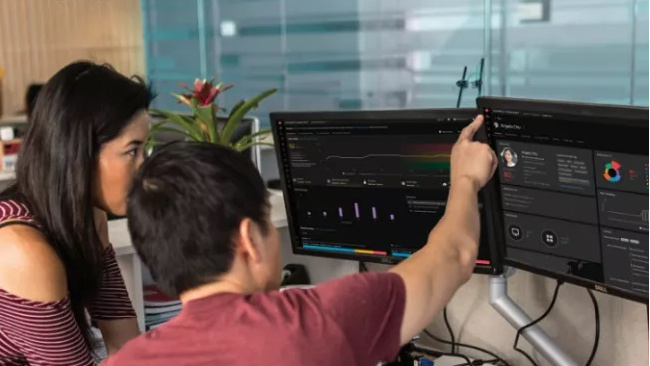Six IT systems for Brexit border control at risk of failure
MPs brand the findings "alarming" as NAO urges government to focus on doing what it can with less than 30 days left


Six of the eight IT systems critical to border control after the UK leaves the European Union (EU) are at risk of failure, despite less than a month until the official withdrawal date.
There has been some progress on delivery since these systems were first assessed last year, according to the National Audit Office (NAO). But a host of systems the border delivery group (BDG), a cross-government committee managing the projects, deemed key to border control are at "significant risk" of not being embedded in time for Brexit on 29 March.
A memorandum, released this week, provides an update on the progress relating to the issues flagged in its initial report published in October 2018.
Beyond functionality, the delivery risks include the need to ensure traders are ready to use the systems, as well as to ensure the right infrastructure and resources are in place to support their use.
The NAO's latest assessment of border systems has divided risk into two categories, IT and process, against a single view of risk in the last update in autumn.
The six IT systems at risk include the Import of Products, Animals, Food and Feed System (IPAFFS) and Automatic Licence Verification System (ALVS), both listed as amber-red, as well as the roll-on, roll-off (RORO) customs system, deemed amber.
Alarmingly, the contingency plan for IPAFFS is also deemed at risk of not being ready in time, with its IT status rated amber, and process rated amber-red.
Sign up today and you will receive a free copy of our Future Focus 2025 report - the leading guidance on AI, cybersecurity and other IT challenges as per 700+ senior executives
This infrastructure is all to some degree co-dependent, moreover, which has heightened risk across the board. One system that may be in a healthier position, for instance, but that also relies on another deemed 'high risk', would render the first at risk of failure as well.
For example, while the IPAFFS is designed to identify and record the results of biosecurity checks, it must also share these via ALVS with the Customs Handling of Import and Export Freight (CHIEF) system.
Meg Hillier MP, chair of the House of Commons' Public Accounts Committee (PAC), which published the NAO report, branded the findings as "alarming".
"The NAO's memorandum shows that with the clock ticking down there remain serious questions about whether the UK will be prepared at the border if there is 'no deal' and what this would mean for individuals and businesses," she said.
"The Public Accounts Committee will be pressing HMRC for answers on preparations for EU exit next week."
As things stand the UK is set to leave the EU without a deal in less than 30 days, barring developments in Parliament. These possibilities including a last-minute withdrawal agreement, or an extension of Article 50.
But NAO has treated 29 March as 'day zero' in its report, with a handful of the most critical systems declared as "at risk of not being delivered to time and to acceptable quality".
"In seeking to reduce the risk to the operation of the border in the event of 'no deal', BDG and departments have focused on putting in place the minimum necessary requirements for 'day one'" the report recommended.
"This includes introducing arrangements that departments believe will facilitate trade across the UK border while still seeking to meet legislative requirements."
For the last couple of years, parliament's PAC has been scrutinising the state of post-Brexit IT systems that are being managed by various departments, including the Department for Environment, Food and Rural Affairs (Defra).
In November last year, the PAC blasted the department for failing to test six critical IT systems that are meant to be in place by the end of March.
These included the system now known as IPAFFS, which is being built to replace the existing Trace Control and Export System (TRACES).
Meanwhile, HMRC's CHIEF has long-expected to be replaced with an alternative system dubbed CDS, the Customs Declaration System. But progress on this had to now been minimal, with Hillier writing to HMRC in October 2018 expressing disappointment that its timing had been slipping.
CDS was expected to be the main system to come into force in the event of a no-deal Brexit, with CHIEF running in parallel until all traders had migrated to the new regime. But HMRC decided last month to use CHIEF as its primary system "because of delays with CDS and concerns from key users including software developers".

Keumars Afifi-Sabet is a writer and editor that specialises in public sector, cyber security, and cloud computing. He first joined ITPro as a staff writer in April 2018 and eventually became its Features Editor. Although a regular contributor to other tech sites in the past, these days you will find Keumars on LiveScience, where he runs its Technology section.
-
 Trump's AI executive order could leave US in a 'regulatory vacuum'
Trump's AI executive order could leave US in a 'regulatory vacuum'News Citing a "patchwork of 50 different regulatory regimes" and "ideological bias", President Trump wants rules to be set at a federal level
-
 TPUs: Google's home advantage
TPUs: Google's home advantageITPro Podcast How does TPU v7 stack up against Nvidia's latest chips – and can Google scale AI using only its own supply?
-
 Global IT spending set to hit a 30-year high by end of 2025
Global IT spending set to hit a 30-year high by end of 2025News Spending on hardware, software and IT services is growing faster than it has since 1996
-
 AI tools are a game changer for enterprise productivity, but reliability issues are causing major headaches – ‘everyone’s using AI, but very few know how to keep it from falling over’
AI tools are a game changer for enterprise productivity, but reliability issues are causing major headaches – ‘everyone’s using AI, but very few know how to keep it from falling over’News Enterprises are flocking to AI tools, but very few lack the appropriate infrastructure to drive adoption at scale
-
 Pegasystems teams up with AWS to supercharge IT modernization
Pegasystems teams up with AWS to supercharge IT modernizationNews The duo aim to create deeper ties between the Blueprint, Bedrock, and Transform services
-
 Better together
Better togetherWhitepaper Achieve more with Windows 11 and Surface
-
 Transforming the enterprise
Transforming the enterpriseWhitepaper With Intel and CDW
-
 More than a number: Your risk score explained
More than a number: Your risk score explainedWhitepaper Understanding risk score calculations
-
 The top trends in money remittance
The top trends in money remittanceWhitepaper Tackling the key issues shaping the money remittance industry
-
 Rushing digital transformation will create cyber security ‘bear traps’ – here’s how to avoid them
Rushing digital transformation will create cyber security ‘bear traps’ – here’s how to avoid themIn-depth Although digital transformation brings many benefits, rushing projects may result in unforeseen cyber security risks